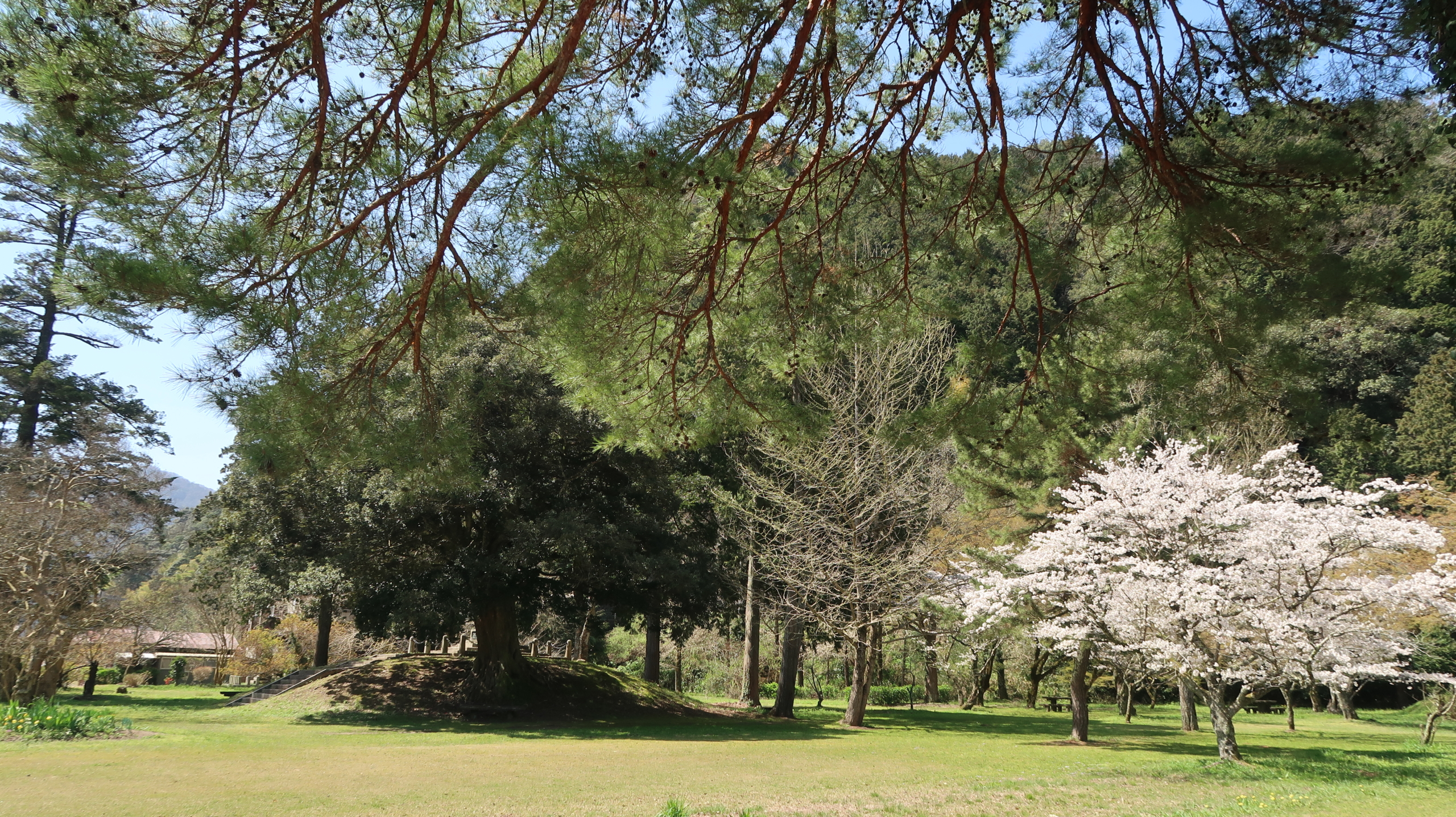
The “Tsuwano Hyakkeizu” is a collection of 100 paintings that depict the landscapes of the Tsuwano domain, as seen by the feudal lord Kamei Koremi.
Follow the footsteps of the lord by embarking on this exhilarating walking course that takes you through a variety of landscapes, from the charming castle town to a peaceful shrine and the view from the castle ruins nestled in a lush forest!

Let’s start our journey at the Tsuwano Japan Heritage Center, where you can listen to an explanation of the Tsuwano Hyakkeizu.
We’ll also highlight the main attractions at each location along the way.
-scaled.jpg)
Take a leisurely stroll along Tonomachi Street, once home to high-ranking samurai. Admire the gates of the three feudal retainers, feed the koi fish in the moat, learn about the martyrdom of hidden Christians at the Catholic Church, and visit Yorokan, the feudal domain school for samurai.
It’s a perfect blend of history and tranquility!
-scaled.jpg)
Yasaka Shrine is the site of the annual Sagimai Heron Dance, recognized as a UNESCO Cultural Heritage of Humanity. It beautifully retains the atmosphere of the late Edo period, with highlights including a magnificent sacred zelkova tree believed to be over 600 years old, which stood even before the shrine was relocated here.
Don't miss the historic stone walls along the river, also dating back to that era.

Today, Taikodani Inari Jinja Shrine is celebrated as one of Japan's five major Inari shrines and is the second most visited shrine in Shimane, after Izumo Taisha. During the Edo period, commoners were not allowed to visit, and it served as a guardian of Tsuwano Castle.
The 1,000 red torii gates that lead to the shrine provide an incredible setting for memorable photos!

For adventurous hikers, a 40-minute trail to the castle begins at the Taikodani Inari Jinja parking area.
7If you prefer a more leisurely route, a chairlift is available and you can pick up a map of Tsuwano Castle at the reception building.
For adults → One way: ¥400 / Round trip: ¥700
For children → One way: ¥300 / Round trip: ¥500
Open from 09:00 to 16:30

Just a 10-minute walk from the chair lift, you'll discover the Demaru, constructed in 1324 by Yoshimi Naoyuki during the expansion of the main keep. The following lord, Sakazaki Naomori, added the stone walls, complete with corner turrets. Today, only the stone walls remain, offering a glimpse into the castle's rich history.

Celebrating its 700th anniversary in 2024, Tsuwano Castle is perched at an elevation of 362 meters, offering stunning views of the town below. This medieval mountain fortress stretches about 2 kilometers from north to south, making it one of the largest in Japan. Originally built for military purposes, the castle features impressive remnants of its fortifications and grand stone walls, considered to be among the finest in the country. During the Meiji period in 1874, Tsuwano Castle was among the first in Japan to be dismantled due to government reforms.
Today, it is designated as a National Historic Site and recognized as one of Japan's 100 Famous Castles, drawing many visitors to this must-see destination in Shimane.

The garden area of the former residence and administrative office of the feudal lord, Kamei Koremi, is now home to Karakuen Garden. The watchtower depicted in painting No. 18 in the "Tsuwano Hyakkeizu" has been relocated here, alongside a statue of the lord created in 1891, making it a lovely spot for a picnic!

This traditional building depicted in No. 12 in the "Tsuwano Hyakkeizu" still stands in its original location today. The main gate of the former residence and administrative office of the lord, has been transformed into the entrance to Tsuwano High School's grounds.

Crossing the Tsuwano River, Ohashi Bridge was once a rare drawbridge. By the late Edo period (1860s), as depicted in the Hyakkeizu, it had evolved into a standard bridge, and now it stands as a modern concrete structure.
As you make your way toward Tonomachi Street, don't miss the chance to discover more of Tsuwano's attractions!
This wraps up your walking tour.